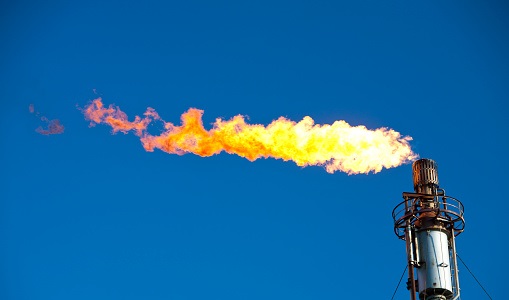US equity markets are a little mixed in pre-market trade, with E-mini Dow futures up about 0.3%, E-mini S&P 500 futures broadly flat and E-mini Nasdaq 100 futures down about 0.3% going into the US cash open. Broadly though, the tone of risk appetite remains positive and index futures continue to trade at or very close to record levels; S&P 500 futures trade around 4230, with support eyed at around 4210. Last week’s soft US jobs report is being interpreted as delaying the Fed’s timeline to tapering its monthly pace of bond buying (and pushing back the timeline to eventual rate hikes), which is being taken as a positive for stocks. The modest divergence between the tech heavy Nasdaq and Dow may be due to continued US and global “reopening” optimism (which tends not to favour tech companies that saw usage spike during lockdowns). European equities are also somewhat mixed, with outperformance in peripheral stocks amid talks of vaccine passports in the EU to allow tourism and the UK set to place Portugal (but not Spain or Italy) on its travel “green” list.
US and European bond markets, meanwhile, are seeing quite subdued price action, which is not too surprising really given the lack of notable fresh macro catalysts since last Friday’s US jobs report and ahead of what is going to be a very quiet US session (no data of note is set for release). Things will heat up later in the week, with (most notably) US CPI and Retail Sales data set for release; yields could be lively in wake of both. For now, US 10-year yields trade around 1.57%, having recovered sharply from their post-soft-NFP drop all the way to 1.48% last Friday.
Turning to commodities; the main stories are 1) the continued blistering rally being seen in industrial metals (Iron ore and Copper both hit record higher during Asia hours) and 2) a spike in US East Coast gasoline and diesel prices following a cyber-attack on the all-important Colonial Pipeline, which transports about 2.5M barrels of oil per day from the South/Gulf Coast to the East, which accounts for about half of the East’s daily consumption. Oil prices are a little higher in sympathy with higher gasoline prices, a reflection of heightened geopolitical risk premia rather than anything else. The timeline for the return to normal operations for the pipeline is as of yet unknown and the uncertainty could keep crude oil underpinned for the time being.
Turning to FX markets and starting by taking a look at the US dollar; the buck is looking vulnerable, with DXY trading only very slightly above overnight (and multi-month) lows in the 90.10s. The dollar was walloped in wake of last Friday’s bad NFP numbers, which, as noted above, is being seen as having dovish implications for the Fed’s policy normalisation timeline. Labour demand was not the reason why the jobs report was so bad, indeed, demand for labour is strong. Difficulties finding workers to fill jobs was the problem, amid 1) generous unemployment benefits which are actually better than minimum wage and 2) continued fear of the virus with many still unvaccinated.
Data this week should point to a hot US economy (CPI on Wednesday and Retail Sales on Friday). In fact, CPI might even hit 4.0% or higher. But the Fed has already signalled that it is expecting inflation to shoot up in the near-term, and that this rise in inflation will be transitory. Stronger than forecast inflation combined with the Fed’s dovish interpretation that high inflation will be temporary may put downwards pressure on the dollar through higher inflation expectations pushing real yields lower. Another negative for the dollar as of late has been the buoyancy of risk appetite; if this remains the case this week, dollar should continue to be hit. Dollar bears are chomping at the bit for a break under 90.00 in the DXY and a move towards annual lows around 89.20.
GBP is the marked outperformer in the G10 this morning, up nearly 1.0% on the day versus the buck and euro, enough to lift GBPUSD to the 1.4100 level having surged convincingly above 1.4000 for the first time since late February, and enough to push EURGBP back towards last week’s lows around the 0.8620s, which is just to the north of the pair’s 50DMA at 0.8619. Reasons for sterling’s sharp outperformance this morning seem predominantly to do with lockdown easing optimism; the PM is expected to confirm a further easing of lockdown measures on the 17th of May at a 1700BST Downing Street press conference today. The public health situation in the country remains positive (infection and death rates very low, Covid-19 no longer putting health system under stress) and some scientists believe herd immunity in the UK has already been reached, although some are warning that the spread of Covid-19 variants in the coming months is likely.
In other notable UK related news, the SNP failed to win an absolute majority in the Scottish parliament, but when combined with the Scottish greens, there is a majority for independence. However, the push for independence will not come until the Covid-19 pandemic is under control, so the SNP has been saying, meaning UK-break-up risk can be put on the back burner for now. Looking ahead to the rest of the week, important Q1 GDP data, as well as industrial & manufacturing output and trade data for the month of March is out on Wednesday morning. All should indicate the UK economy picking up some steam ahead of what is likely to be a much more positive Q2. ING think this is likely to be GBP supportive and expect GBPUSD to hold above 1.4000 throughout summer.
The second best G10 performer on the morning is AUD. The currency is feeling the tailwinds from a continued surge in commodity prices, namely in iron ore and copper, both of which hit record high levels during overnight trade in China. Both continue to benefit from general optimism about the global economic recovery, whilst iron ore is also being pushed higher by supply side factors (China attempting to curtail steel capacity in a bid to reduce pollution) and copper also deriving an ongoing boost from the transition to non-fossil fuel transportation/energy technology (i.e. rising copper demand for EVs).
Domestic factors are also helping the Aussie; last night’s NAB business survey, taken in April, saw business confidence rise to record levels, easing concerns that the economy would suffer after the government withdrew its pandemic emergency job-retention scheme at the end of March. Meanwhile, Retail Sales in March were a little softer than expected but point to positive momentum going into Q2. AUDUSD has now managed a clean break to the north of the 0.7850 level which had been keeping the price action in check, and trades at its highest since late-February. Aussie bulls will be targeting a move towards annual highs around 0.8000; as long as commodity prices and risk appetite (i.e. stocks) remain supported, the Aussie ought to continue its steady grind higher. In terms of key events this week, the federal government releases its new budget tomorrow, which ought to show a record deficit (though a deficit that is far worse than feared) and consumer inflation expectations will be out later in the week.
The rest of the G10 is much more subdued; taking third spot is NZD, lifted by optimism in its antipodean peer AUD, though perhaps tempered by concerns about a large domestic milk producer cutting its annual sales forecast for a third consecutive time amid continued disruptions and excess inventory in its key sales channel in China. NZDUSD is up just over 0.2% on the day but has up until now failed to break to the north of the 0.7300 level.
CAD, NOK and CHF are each up about 0.1% on the day versus the buck, with the former two modestly lifted by higher crude oil prices, whilst the Nikkei shrugs off cooler than anticipated CPI inflation numbers for the month of April. Swiss sight deposits, meanwhile, saw a modest weekly rise, but not enough to ruffle any feathers or upset CHF. Besides a speech from BoC Governor Macklem on Thursday, there is not a great deal for Loonie traders to watch this week, hence USDCAD price action is likely to be a determinant of dollar flows, risk appetite and crude prices. With the pair already at multi-year lows and down nearly 5.0% in the last three months, the case for further downside is becoming a little more difficult to make, at least at the current pace.
JPY is the modest G10 underperformer, still struggling amid what remains a broadly positive tone to risk appetite, whilst SEK is weighed by a dovish tilt to this morning’s Riksbank minutes (which saw several policy makers arguing in favour of the dovish policy stance that a stronger than expected recovery and inflation overshoot would not be sufficient for less expansionary policy). EUR, meanwhile, has failed to garner much impetus from a stronger than expected Sentix Investor Confidence reading for the month of May (which came in at 21.0, up from 13.1 last month). EURUSD is looking to retest the 1.2200 level but short-term upside momentum appears to have waned for now and may require more downside in the US dollar. Eurozone Industrial Production (for March) and the German ZEW survey (for May) are the main data points to watch out for this week.
The Day Ahead
As noted, there is very little of note on the economic calendar for the rest of the day. Pandemic related news (lockdown easing in the US and Europe, potential national lockdown in India) and any further updates regarding the cyber attack on the US Colonial pipeline would be of note. Otherwise, market participants might opt to keep their powder dry ahead of juicier risk events later in the week, such as US CPI on Wednesday and US Retail Sales on Friday.




